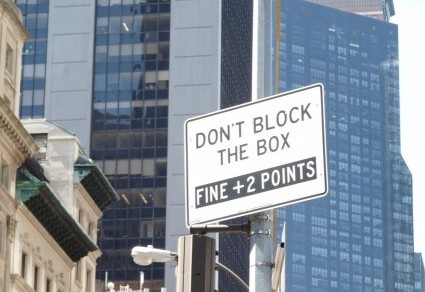Harry Truman kept a sign on his desk in the Oval Office declaring that “the buck stops here.” Harry’s acknowledgement of responsibility is, unfortunately, not trending right now. Instead, blame-shifting is on the rise. Take a look at this sign, taped to the door of a major telecommunications company:
It’s worth noting that in front of the door is a single, short step. We’re not talking stoop here, or terrace, or anything other than the standard dirty, cracked, Manhattan sidewalk and what might reasonably be termed a ledge.
Some questions arise:
(1) Given the exorbitant rates for cellphone service, can’t the company afford a professionally printed sign? The morning I snapped this photo the paper was taped flat, but by the afternoon, the edges had curled up. Should I worry about network maintenance if the company can’t pay for a real sign?
(2) Has the property management been walking in and out of the building every day, tripping over passersby who sat on the ledge – er, I mean step? This building is near my home, and I’ve seen people sitting in front of it only once. On folding chairs. Striking workers tired of picketing, they weren’t barbecuing, just passing around sandwiches, listening to music, and generally having a fine old time. When the strike ended, everyone went away. Why the sign? Fear of copycat tailgating?
(3) Who is property management? The building, a giant windowless pile of brick, has been a telephone-company outpost since the dial-up era. Yet the sign appears to deflect responsibility to a nameless management. Maybe the person who printed the sign wanted backup authority? It’s not just me, a lowly secretary, who forbids you a seat. It’s them. Pay attention. Or should I say, ***ATTENTION***?
This don’t-blame-me sign is one example of a common type:
The sign implies that you pay what the manufacturer demands, and not a penny more. The store owner takes no profit. The rent is a charitable contribution, as are the utilities and staff salaries. Right? Or, perhaps the store has ceded its pricing authority to the manufacturer, who applies an algorithm that includes the store’s expenses? Either way, it’s don’t blame me.
A variation on this theme is “lowest prices allowed by law.” I see this phrase on signs atop cigarette racks. Does this statement mean that the store gives you the smokes for free, except for taxes it merrily sends along to the state, city, or wherever? Doubtful.
That’s it for now. If you want more examples, you’re out of luck. I don’t write the signs. I just post what appears. Don’t blame me.

















